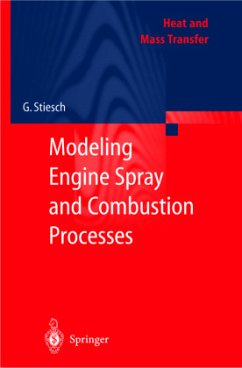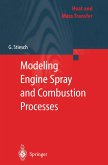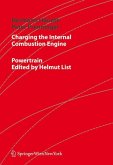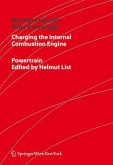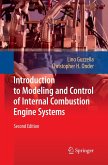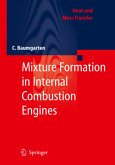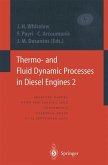The book covers the various approaches to modeling the in-cylinder processes such as mixture formation, combustion and formation of exhaust emissions in diesel and gasoline engines. Due to their complexity, emphasis is put on multi-dimensional spray, combustion and emission formation models. However, phenomenological as well as zero-dimensional thermodynamic models, which are still widely used in engine development because of their computational efficiency, are addressed as well. Example calculations of each model type are compared with corresponding experimental data - represented in diagrams as well as in images resulting from modern optical measuring techniques - in order to discuss the capabilities of today's simulation models and the shortcomings that still exist either because of oversimplifying assumptions or insufficient knowledge. Readers achieve an overview of the most important simulation models describing the in-cylinder processes of internal combustion engines and gain insights into which modeling approach is appropriate for a specific problem.
The utilization of mathematical models to numerically describe the performance of internal combustion engines is of great significance in the development of new and improved engines. Today, such simulation models can already be viewed as standard tools, and their importance is likely to increase further as available com puter power is expected to increase and the predictive quality of the models is constantly enhanced. This book describes and discusses the most widely used mathematical models for in-cylinder spray and combustion processes, which are the most important subprocesses affecting engine fuel consumption and pollutant emissions. The relevant thermodynamic, fluid dynamic and chemical principles are summarized, and then the application of these principles to the in-cylinder processes is ex plained. Different modeling approaches for the each subprocesses are compared and discussed with respect to the governing model assumptions and simplifica tions. Conclusions are drawn as to which model approach is appropriate for a specific type of problem in the development process of an engine. Hence, this book may serve both as a graduate level textbook for combustion engineering stu dents and as a reference for professionals employed in the field of combustion en gine modeling. The research necessary for this book was carried out during my employment as a postdoctoral scientist at the Institute of Technical Combustion (ITV) at the Uni versity of Hannover, Germany and at the Engine Research Center (ERC) at the University of Wisconsin-Madison, USA.
The utilization of mathematical models to numerically describe the performance of internal combustion engines is of great significance in the development of new and improved engines. Today, such simulation models can already be viewed as standard tools, and their importance is likely to increase further as available com puter power is expected to increase and the predictive quality of the models is constantly enhanced. This book describes and discusses the most widely used mathematical models for in-cylinder spray and combustion processes, which are the most important subprocesses affecting engine fuel consumption and pollutant emissions. The relevant thermodynamic, fluid dynamic and chemical principles are summarized, and then the application of these principles to the in-cylinder processes is ex plained. Different modeling approaches for the each subprocesses are compared and discussed with respect to the governing model assumptions and simplifica tions. Conclusions are drawn as to which model approach is appropriate for a specific type of problem in the development process of an engine. Hence, this book may serve both as a graduate level textbook for combustion engineering stu dents and as a reference for professionals employed in the field of combustion en gine modeling. The research necessary for this book was carried out during my employment as a postdoctoral scientist at the Institute of Technical Combustion (ITV) at the Uni versity of Hannover, Germany and at the Engine Research Center (ERC) at the University of Wisconsin-Madison, USA.
MECHANICAL ENGINEERING "In this volume, the author covers the various approaches to modeling in-cylinder processes, such as mixture formation, combustion, and formation of exhaust emissions in diesel and gasoline engines. Due to their complexity, emphasis is put on multidimensional spray, combustion, and emission formation models. However, phenomenological and zero-dimensional thermodynamic models, which are still widely used in engine development, are addressed as well. Example calculations of each model type are compared with corresponding experimental data in order to discuss the capabilities of today's simulation models, as well as shortcomings that still exist. There is an overview of the most important simulation models describing the in-cylinder processes of internal combustion engines. In addition, suggestions are made about which modeling approach is appropriate for a specific type of problem."

